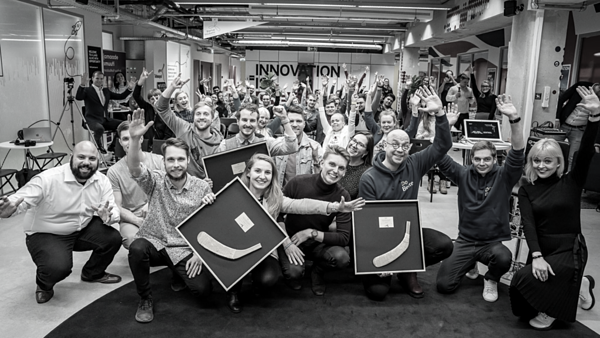
5 main reasons why early-stage startups fail to get funding
According to a U.S. Bank study, a whopping 82% of businesses that failed cited cash flow problems as a factor in their failure. Money doesn’t buy you happiness, but if your goal is to develop a successful business and grow fast, you sure will need it to make it happen. Tehnopol Startup Incubator team outlines the most common reasons why startups fail to attract much-needed investment.
This article was written by Karen-Maria Toomiste, Marketing Project Manager at Tehnopol.
“There’s an investor for every startup. You just have to find yours!” – Lev Dolgatšjov, the President of Estonian Business Angels Network EstBan and key mentor of Tehnopol Startup incubator.
According to a U.S. Bank study, a whopping 82% of businesses that failed cited cash flow problems as a factor in their failure. Money doesn’t buy you happiness, but if your goal is to develop a successful business and grow fast, you sure will need it to make it happen.
As a founder, before you go after the money, make sure you know which stage you’re in. A typical startup journey has three stages – ideation, growth and expansion, and the funding opportunities depend on your stage. If you don’t know where you are, you don’t know how to get moving. But whatever the stage, the basics are the same, and here’s a checklist of 5 top reasons why startups fail to get funding.
1. No team or a wrong team
Investors love teams. If you are a lone wolf or a man with a dog kind of team, then the investor isn’t convinced that you are going to make it. In fact, 23% of startups mentioned team issues leading to failure. A smart man once said that in real estate, it’s all about location; in a startup, it’s all about the team. It’s the key to success and the foundation of a startup that investors can’t resist! It’s obvious that in the very early stage, you don’t have the resources to build a full-time dream team just yet, but it definitely should be one of your first goals while building a successful startup. Let’s take a simple example of a dream team that surely everyone knows – the A-team:
• CEO (Hannibal) – the leader and the main idea-generator, planner and strategist.
• CTO (B.A) – the leader of technology who knows everything about the enterprise’s product and its life story. He knows how to build and develop the product and stands for it being really a good thing. Pedantic and meticulous characteristics ensure that the product portfolio is exactly what it needs to be.
• The salesman (Faceman) – the salesman and marketing provider. He likes performing in public and meeting people and is best characterized as a “hustler“. The one who makes sales and creates customer relations with the support of good looks and a modicum of sneakiness.
• Engineer (Murdock) – somewhat crazy, teased in a positive way by teammates. The weirdo that teammates need to keep in check. Capricious and diffused at times, but immensely smart part of the team with all the twists.
So, before investors want to invest in your idea, regardless of how amazing it is, you must invest in putting together a team and building relations that last. Only then do investors believe that you are able to deliver what you promise.
2. The investor just doesn’t believe in you. How to build trust?
Being an early-stage startup, it’s not easy to get the investor behind the table, not to mention getting a YES to the deal. Investors have a lot of interest in early-stage startups, but they also want to lower their risks and are way more likely to give you the money if you are pre-validated by a trustworthy partner, an incubator or an accelerator that they know. For example, Tehnopol Startup Incubator startups have raised over €25M investments while being in the program or shortly after finishing it. In the eyes of the investors, it’s like a quality assurance stamp. So, take the shortcut to your investment through a quality support program.
3. You’re the guy from the “New venture” paranoia club
Do you fear that somebody will steal your idea? Guess what? Google is full of great startup ideas. No matter how innovative and unique your idea may appear, nine times out of ten, there will be something similar already on the market. Even if it’s very niche or unique, it’s impossible to have no competition at all. That might just mean the problem you’re solving isn’t really a problem after all. If you’re pitching your idea and saying you don’t have any competitors, it’s a red flag for the investors. This means you probably haven’t done the research well enough. Share it with investors, other founders, and mentors, and you’ll get some valuable feedback to improve it instead. Don’t focus on that others might steal it or what your competitors are doing. A successful entrepreneur knows that his real competitor is in the mirror, and you just have to validate your idea like a rockstar.
4. Are you going to survive the Valley of Death?
The valley of death is a feared phase in the startup life cycle, typically occurring
after the company launches a product but has not yet seen any revenue. Surviving the death valley curve marks a significant milestone in the life of a startup company, signaling to investors that it has survived its startup phase and stands a better chance of reaching maturity. How to survive it? Accumulate some resources before you start, don’t quit your day job until revenue starts to flow, use crowdfunding, apply for contests and business grants or join a startup incubator. (By the way, we happen to know a great one where six startups out of 10 will not only survive but also succeed.)
5. You don’t have product-market fit… yet
A huge factor in a startup’s success comes into play before the company ever launches. Before you do anything else, carefully research your target audience and your offering’s potential product-market fit. Do people really need your product or service? Is your startup building a vitamin on a painkiller? Make sure it’s something your target group actually needs today, helping them solve big pain points with established budgets.
Have you got customers? Have you got revenue already? Are people downloading your app, using your product or advocating your service? These are really good indicators that you’ve got a good product-market fit, and that’s what investors are looking for. If you’re not there yet, it’s better to save as much money as possible, spend more time with your customers, and build a product they really need.
Being an entrepreneur and finding the resources to build a successful business is not just a walk in the park but more like a rollercoaster ride in an amusement park. At sTARTUp Day, we invite you to the Tehnopol Startup Incubator demo area, where we assure you’re going to have an epic ride full of adrenaline rush and excitement with us!

Due Diligence – How to Stay in the Game


